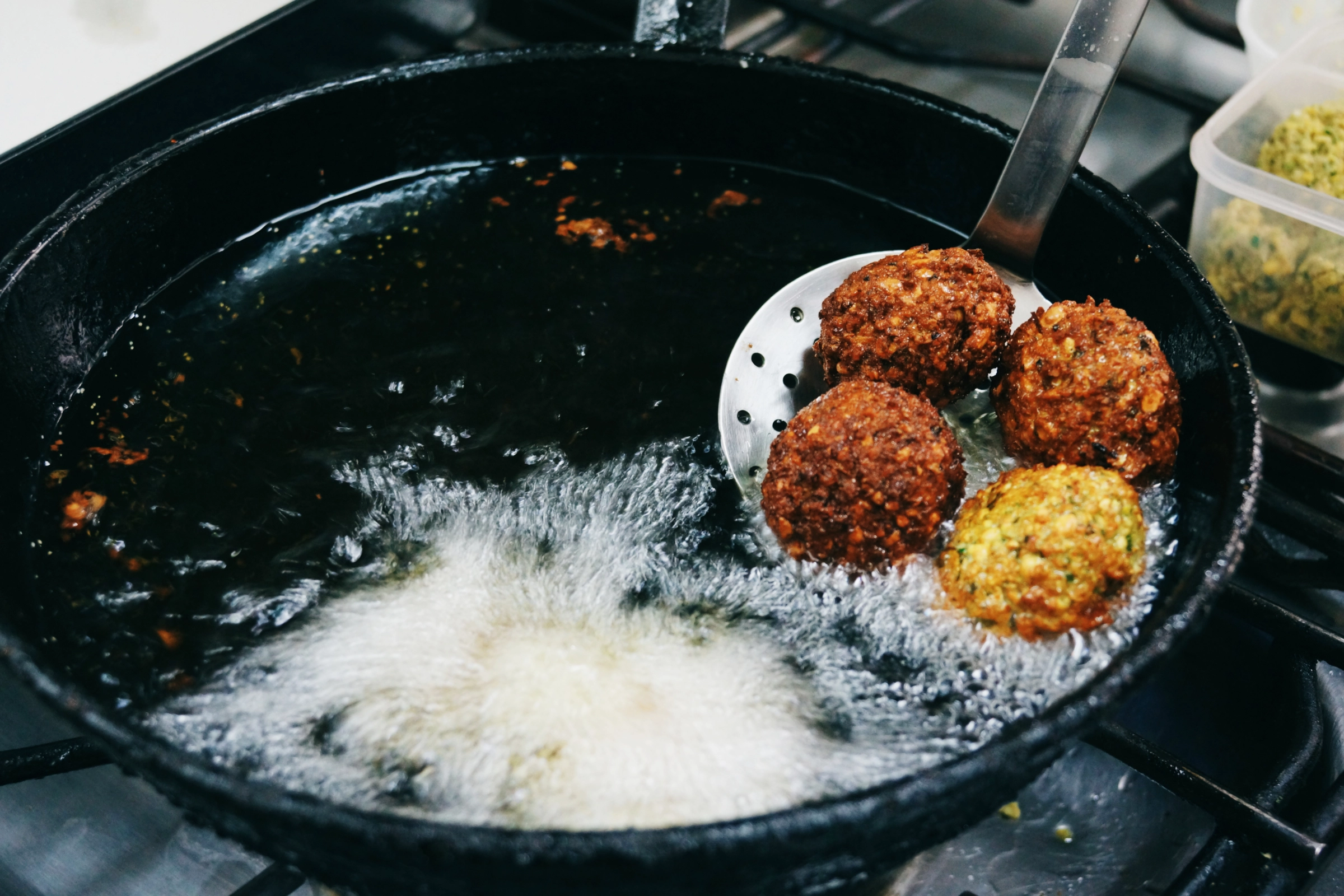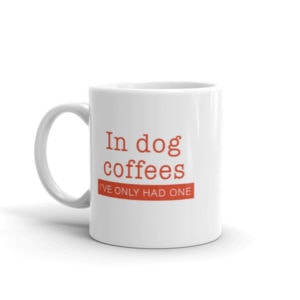This post may contain ads and affiliate links and we may earn a small commission when you click on the links at no additional cost to you. As an Amazon Affiliate, we earn from qualifying purchases. You can read our full disclaimer here.
Can Dogs Eat Falafel? Separating Fact from Fiction for Canines

Have you ever wondered, “can dogs eat falafel?” If you’re like most dog owners, watching those pleading eyes as you munch on your favorite snack is an all-too-familiar scene.
Our four-legged companions have this innate ability to make us question the safety of every crumb we drop. Their love for food knows no bounds, and it’s hard to resist those wagging tails and hopeful gazes.
Sharing is Caring, But Can Dogs Eat Falafel?
We love sharing moments with our furry friends, especially during meal times. But while our intention is to treat them, it’s crucial to pause and ask: is what I’m sharing beneficial or potentially harmful?

With the myriad of foods we indulge in, it’s easy to overlook what might be a treat or a threat for our canine buddies. And that brings us to the star of our discussion: falafel.
Falafel, a beloved dish by many, combines flavors and ingredients that dance on our human tongues. But before tossing a piece to your eager pup, it’s time to dive into the details and find out if this flavorful delight is fit for Fido.
A Brief on Falafel: The Origin of a Global Sensation
Meet falafel: the golden, crispy treat that has danced its way into hearts and stomachs worldwide. But where did it begin? The Middle East claims the birthright of this delicious ball.
Some say it’s Egyptian; others argue it’s Levantine. Wherever it originated, its journey from a local delicacy to a global sensation is undeniable.
Unpacking the Falafel
Let’s break it down. What’s inside these delightful balls?
- Chickpeas (or sometimes fava beans or garbanzo beans): The heart and soul of the falafel. They give it its texture and substance.
- Herbs: Think parsley, coriander, and sometimes mint. They’re the green hues you spot and the fresh burst you taste.
- Spices: Cumin, coriander, garlic – these are the flavor agents. They add that “oomph” to every bite.
- Frying Oil: Typically, it’s deep-fried to crispy perfection. It’s what gives the falafel its iconic golden brown shell.
More Than Just a Snack
Sure, falafel balls are often tucked into pita pockets or sprinkled over salads. But their significance goes beyond their taste. They’re a symbol of tradition, gatherings, and comfort food in many cultures.
Their popularity? Well, that’s thanks to their fantastic flavor, the ease of preparation, and the joy of sharing a bite with friends and family.
Can Dogs Eat Falafel? Chickpeas
When it comes to feeding our dogs, we all seek the healthiest and safest options. Chickpeas, also known as garbanzo beans, have been catching the eyes of pet owners as a possible treat for their canine companions.
But should our furry pals be joining the chickpea fan club?
Pros of Chickpeas for Dogs
- Nutrient-Rich: Chickpeas are a great source of protein, fiber, folic acid, and several essential minerals like magnesium and potassium. They can offer dogs a healthy boost when given in moderation.
- Low-Fat: A fantastic treat alternative! They’re naturally low in fat, making them an excellent choice for dogs watching their waistlines.
- Gluten-Free: For dogs with specific dietary restrictions or allergies, chickpeas can be a gluten-free alternative to some grains.
Cons of Chickpeas for Dogs
- Digestive Issues: Too many chickpeas can lead to stomach upset. They’re high in fiber, which is great, but overindulgence can mean a gassy pup or even diarrhea.
- Potential Allergies: Like any other food, there’s always a risk of allergies. If it’s the first time your dog is trying chickpeas, it’s good to keep an eye out for any allergic reactions.
- Preparation Matters: It’s essential to know that raw chickpeas aren’t suitable for dogs. They must be cooked and free from seasonings and spices.
Balancing the Benefits and Risks
While chickpeas can be a healthy addition to a dog’s diet, moderation is crucial. It’s always a good idea to consult with a veterinarian before introducing any new food into your pet’s diet.
Every dog is unique, and what works for one might not work for another.
Can Dogs Eat Falafel? Herbs and Spices
As dog owners, we often hear about the foods our pets shouldn’t eat, like chocolate or grapes. But what about the herbs and spices that flavor our favorite dishes?
Some of these can be just as concerning when it comes to our canine companions.
Common Herbs and Spices in Falafel: The Safe and the Risky
- Parsley:
- Safety Level: Generally safe.
- Details: In small amounts, parsley can be beneficial for dogs, offering vitamins and antioxidants. However, steer clear of Spring Parsley, a specific type of parsley, as it can be toxic to dogs.
- Coriander (Cilantro):
- Safety Level: Safe.
- Details: Coriander, especially the seeds, can be given to dogs in moderation. They’re not known to be toxic and can offer some minor digestive benefits.
- Cumin:
- Safety Level: Moderately safe.
- Details: Cumin isn’t toxic to dogs but can cause stomach upset if consumed in large amounts.
- Garlic:
- Safety Level: Risky.
- Details: While garlic is a common ingredient in falafel recipes, it can be harmful to dogs, especially in large amounts. Garlic contains thiosulfate, which can lead to oxidative damage to red blood cells in dogs, causing anemia.
- Onion Powder:
- Safety Level: Dangerous.
- Details: Onions and onion derivatives are toxic to dogs. They can cause oxidative damage, leading to hemolytic anemia. It’s essential to keep any food containing onions or onion powder away from dogs.
Navigating the Herb and Spice Aisle with Your Pup in Mind
When it comes to herbs and spices, it’s essential to tread cautiously. Some might seem harmless due to their health benefits for humans, but they can pose serious threats to our four-legged friends.
Before treating your dog to any homemade delicacies, make sure you’re well-informed about each ingredient. And as always, when in doubt, leave it out or consult your veterinarian.
Can Dogs Eat Falafel? The Dangers of Fried Foods for Dogs

We’ve all been there: enjoying a plate of crispy, golden fried delights with our furry friend eagerly watching, perhaps hoping for a tiny morsel to drop.
While the occasional treat might not seem like a big deal, the truth is, fried foods come with some risks for our canine companions.
Why Fried Foods Can Spell Trouble for Dogs
- Rich and Fatty: Fried foods are typically high in fats. While fats are an essential part of a dog’s diet, the excessive fats found in fried foods can lead to obesity and associated health problems like diabetes and joint issues.
- Pancreatitis Risk: The sudden intake of a high-fat meal, like that tempting fried chicken or those French fries, can trigger pancreatitis in dogs. This condition is an inflammation of the pancreas and can be severe, requiring veterinary attention.
- Digestive Upsets: Let’s face it, fried foods, with all their oily glory, can even upset some human stomachs. For dogs, this rich food can lead to diarrhea, vomiting, and general stomach discomfort.
The Slippery Side of Oils in Falafel
While falafel itself might seem relatively harmless, the oil it’s fried in can be a concern for several reasons:
- Type of Oil: Some oils are better for dogs than others. For example, coconut oil and fish oil can have health benefits for dogs. However, many fried foods, including falafel, are prepared using oils that are high in saturated and trans fats, like palm oil or certain vegetable oils.
- Excess Salt: Often, fried foods like falafel are seasoned post-frying. This added salt can be harmful to dogs, leading to increased thirst, urination, and even sodium ion poisoning in extreme cases.
- Overconsumption Risk: Even if a bit of falafel won’t harm a dog, there’s always the risk of them wanting more or accidentally accessing a larger amount. The combined ingredients, plus the oil, can then pose a significant health risk.
Frying Up a Conclusion to Can Dogs Eat Falafel?
Though the aroma of fried foods can be tempting for both humans and dogs alike, it’s best to keep these treats to ourselves.
For our canine pals, there are plenty of dog-safe treats available that will satiate their appetites without the associated risks of human fried foods.
The Verdict: Can Dogs Eat Falafel?
After journeying through the ingredients and preparation process of falafel, the lingering question remains: Should our canine buddies indulge in this Middle Eastern delicacy?
Recapping the Falafel Breakdown
- Chickpeas: While a good source of protein and fiber, they can cause digestive issues if consumed in large quantities.
- Herbs and Spices: Ingredients like garlic and onion powder can be harmful, while others like cumin and parsley are generally safe in moderation.
- Frying Oil: The high fat content and the type of oil used can lead to a myriad of health issues ranging from digestive upset to pancreatitis.
To Feed or Not to Feed?
Given the combined potential hazards, the verdict is clear: It’s best to keep falafel off your dog’s menu. While an occasional small bite might not cause immediate harm, regularly feeding or giving larger quantities can pose health risks.
Our pets often look up to us with those irresistible eyes, making it challenging to deny them any treats. But with their well-being at the forefront, avoiding falafel and opting for safer, dog-friendly treats is the best route.
It’s always better to play it safe and ensure our furry friends enjoy a long, happy, and healthy life by our side.
Healthy Alternatives to Falafel for Dogs
We get it; sharing food moments with our furry friends is a special kind of bonding. While falafel might be off the menu for them, there are plenty of tasty and safe alternatives you can offer your dog.
Let’s dive into some dog-approved treats that are both delicious and nutritious.
Wholesome Treats for Tail-Wagging Moments
- Carrots: Crunchy and naturally sweet, carrots are a great low-calorie snack packed with vitamins. They’re also excellent for a dog’s dental health. Serve them raw, steamed, or even frozen for a cool summer treat.
- Blueberries: Rich in antioxidants and vitamins, blueberries are a juicy treat that most dogs adore. They’re also small and easy to use as a training reward.
- Pumpkin: This is a favorite for many dog owners, especially for its digestive benefits. You can offer plain canned pumpkin (ensure there’s no added sugar or spices) or even cook and mash fresh pumpkin.
- Lean Meats: Chicken, turkey, or beef (all cooked without seasoning) can be a high-protein treat for your pup. Make sure there are no bones and the meat is cooked thoroughly.
- Sweet Potatoes: Another excellent source of dietary fiber, sweet potatoes can be steamed, baked, or even given as dehydrated chips. They’re a hit with most dogs and are also beneficial for their digestive system.
- Green Beans: Low in calories and high in fiber, green beans can be a crunchy treat when given raw or a soft snack when cooked. Just ensure there’s no added salt or seasonings.
- Watermelon: Perfect for hot days, watermelon (without seeds or rind) can be a hydrating and refreshing treat. It’s low in calories and high in vitamins A, B6, and C.
- Apples: Slices of apple can be a crunchy treat packed with vitamins A and C. Ensure you remove the core and seeds before offering them to your dog.
Tailored Dog Treats
It’s essential to remember that every dog is unique, and what might be a hit with one might not be favored by another. It’s always good to introduce new foods and dog treats in moderation and observe for any allergies or digestive issues.
With this list in hand, the next time those puppy eyes look up at you during snack time, you’ll be ready with a healthy and safe alternative!
Wrapping Up Can Dogs Eat Falafel
Navigating the culinary world with our canine companions by our side can sometimes be a maze of do’s and don’ts. From our exploration into the world of falafel, we’ve unearthed some key takeaways:
- Falafel’s Composition: A popular Middle Eastern dish, falafel contains a medley of ingredients, each with its own implications for dogs. From the protein-rich chickpeas to the myriad of herbs and spices and the frying process itself, it’s essential to understand each component’s impact.
- Safety First: While some ingredients in falafel, like chickpeas and certain herbs, can be safe in moderation, others, such as garlic and onion powder, pose risks. Furthermore, the frying process and the type of oils used introduce another layer of potential harm.
- Alternative Treats: Fortunately, the world of dog-friendly treats is vast and varied. From crunchy carrots and juicy blueberries to hearty lean meats, there’s no shortage of healthy alternatives to share with our pups.
In the vast culinary landscape, the importance of knowing what’s on our dog’s plate cannot be overstated. As guardians of their well-being, it’s our responsibility to ensure that their tails keep wagging and their health stays robust.
Always prioritize safety and well-informed choices when it comes to feeding your furry friend, ensuring a long, joyful journey together.
-

Coffee Mug – In Dog Coffees I’ve Only Had One
$11.95 – $14.95 Select options This product has multiple variants. The options may be chosen on the product page
